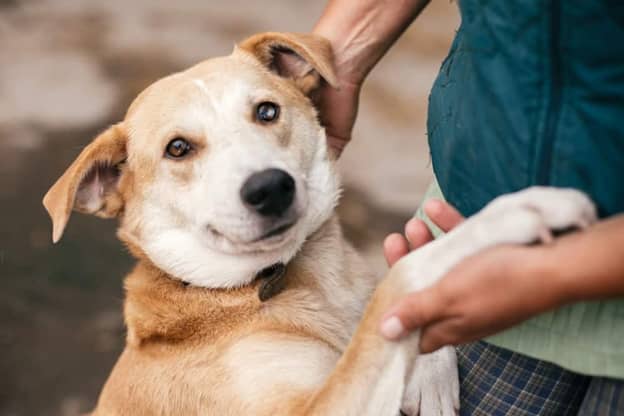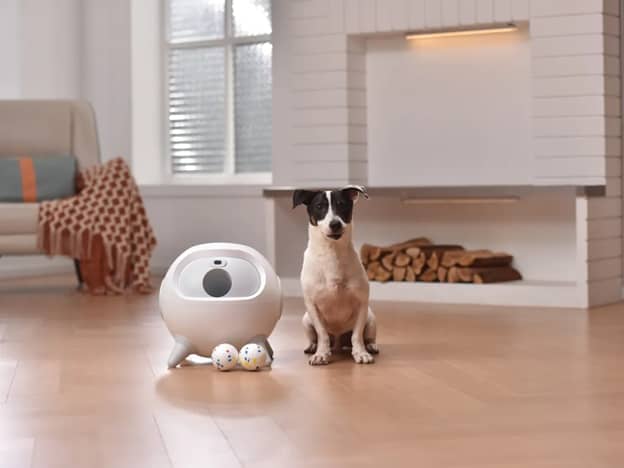
When adopting a rescue dog, it is important to prepare your home for their arrival. Rescue dogs may come from a variety of backgrounds and may have different needs than a dog that has been raised from a puppy. By equipping your home with the necessary supplies and creating a safe and welcoming environment, you can help ease the transition for your new furry family member.
One of the first steps in preparing your home for a rescue dog is to ensure that you have all the necessary supplies. This may include a crate, food and water bowls, a leash and collar, toys, and bedding. It is also important to research the specific breed or mix of your rescue dog to determine if there are any additional supplies or equipment that may be needed.
In addition to having the necessary supplies, it is important to create a safe and welcoming environment for your new rescue dog. This may include finding a quiet and comfortable spot for them to rest, removing any potential hazards from your home, and establishing a routine to help them feel secure and comfortable in their new surroundings. Building trust and love with your new rescue dog will take time and patience, but with the right preparation and care, you can provide them with a happy and healthy home.
Key Takeaways
● Preparing your home with the necessary supplies and creating a safe environment can help ease the transition for your new rescue dog.
● Researching the specific breed or mix of your rescue dog can help determine any additional supplies or equipment that may be needed.
● Building trust and love with your new rescue dog takes time and patience, but with the right preparation and care, you can provide them with a happy and healthy home.
Preparing Your Home for Arrival

Welcoming a rescue dog into your home is an exciting and rewarding experience. Before bringing your new furry friend home, it is important to prepare your home to make the transition as smooth as possible. Here are some tips to help you set up your home for your new pup.
Setting Up a Safe Space
Dogs thrive on routine and structure. Setting up a designated area for your new dog will help them feel safe and secure. This can be a crate or a den-like space where your dog can retreat to when they need some alone time. Make sure the space is comfortable and cozy with soft bedding and blankets.
Essential Supplies Checklist
To make sure you have everything your new dog needs, use this essential supplies checklist:
- Crate or Den
- Safety gates
- Comfortable dog bed
- Food and water bowls
- High-quality dog food
- Collar and ID tag
- Harness and leash
- Toys for mental and physical stimulation
- Treats for training
- Grooming supplies, such as a brush and nail clippers
Creating a Calm Environment

Dogs are sensitive to their environment, so it is important to create a calm and peaceful atmosphere in your home. Avoid loud noises and sudden movements, and keep the environment as consistent as possible. Establish a feeding schedule stick to it, and make sure your dog has access to fresh water at all times.
By following these tips, you can help your new rescue dog feel safe, comfortable, and loved.
Health and Wellness
When bringing a rescue dog into your home, it is essential to prioritize their health and wellness. This section will cover some of the most critical aspects of ensuring your new furry friend stays healthy and happy.
First Veterinary Visit

It is crucial to schedule a visit with your veterinarian as soon as possible after adopting a rescue dog. This initial visit will allow the vet to assess the dog’s overall health and identify any underlying medical conditions that may require treatment. They will also be able to recommend a vaccination schedule and provide advice on nutrition and diet.
Understanding Vaccinations and Health Checks
Vaccinations are a vital part of ensuring your rescue dog stays healthy. Your vet will recommend a vaccination schedule based on your dog’s age, breed, and medical history. It is essential to keep up with this schedule to protect your dog from dangerous diseases.
Regular health checks are also crucial for maintaining your dog’s health. These checks will allow the vet to identify any potential health issues before they become more serious.
Nutrition and Diet Management
Proper nutrition is essential for your rescue dog’s overall health and well-being. It is crucial to feed your dog a balanced diet that meets their nutritional needs. Your veterinarian can recommend a diet based on your dog’s age, breed, and medical history.
It is also important to manage your dog’s diet to prevent issues such as obesity and digestive problems. Avoid feeding your dog table scraps and stick to a consistent feeding schedule.
Behavior and Training
Training and behavior are crucial to ensuring that your rescue dog adjusts well to their new home. With patience, consistency, and positive reinforcement, you can help your dog overcome any trauma they may have experienced and establish a strong bond with them.
Establishing a Routine
Establishing a routine is essential for your rescue dog’s adjustment period. It helps them feel secure and comfortable in their new environment. Consistency is key, so try to stick to a regular feeding and exercise schedule. This will also help with potty training and other training exercises.
Potty Training and House Rules
Potty training is one of the most important things to focus on when you first bring your rescue dog home. Be patient and consistent, and use positive reinforcement to reward good behavior. Crate training can also be helpful for potty training and establishing boundaries.
Setting clear house rules is also important. Decide where your dog is allowed to go and what items they can and can’t chew on. This will help prevent any destructive behavior and keep your dog safe.
Socialization and Interaction with Other Pets
Socialization is crucial for your rescue dog’s well-being. Introduce them to new people, places, and other pets slowly and in a controlled environment. Positive reinforcement training can also help with socialization and prevent guarding behavior.
If you’re having trouble with training or behavior issues, consider reaching out to a professional trainer. They can provide guidance and support to help your rescue dog adjust to their new home.
Don’t forget to have fun with your rescue dog! The Uah Pet iRetriever Dog Ball Launcher can be a great way to bond and play with your furry friend.
Building Trust and Love

Building trust and love with a rescue dog can be a challenging but rewarding experience. The first days and weeks are crucial for establishing a strong bond between the new owner and the dog. Understanding and managing anxiety is key to a successful adjustment period, and patience and consistency are essential for building trust and love.
First Days and Weeks
The first few days and weeks are critical for a rescue dog’s adjustment to their new home. It is essential to provide a calm and secure environment to help the dog decompress from the stress of being in a shelter or foster home. A decompression walk, a quiet walk in a low-stress environment, can help the dog adjust to their new surroundings.
It is also important to have realistic expectations during this time. Accidents may happen, and the dog may need time to adjust to their new family member. Providing a secure and comfortable space, such as a crate or bed, can help the dog feel more secure and reduce anxiety.
Understanding and Managing Anxiety
Rescue dogs may have anxiety due to their past experiences. It is crucial to understand and manage their anxiety to build trust and love. Providing affection and security can help the dog feel more comfortable in their new environment.
It is also important to establish a routine for the dog to help reduce anxiety. A consistent schedule for feeding, walking, and playtime can help the dog feel more secure. Additionally, providing plenty of exercise and mental stimulation can help reduce anxiety and build trust.
The Role of Patience and Consistency
Patience and consistency are essential for building trust and love with a rescue dog. It may take time for the dog to adjust to their new home and family. Providing affection, security, and a consistent routine can help build trust and love over time.
It is also important to be consistent in training and behavior expectations. Positive reinforcement and clear communication can help the dog understand what is expected of them. Patience and consistency are key to building a strong bond with a rescue dog.
SEE ALSO
- Unleashing Power and Presence: American Bully XL Magnificence
- Beauceron Excellence: Unveiling the Majesty and Temperament of this Dog Breed
- Bedlington Terrier dog breed: The Quirky Canine with a Heart of Gold
Frequently Asked Questions
What steps should I take to prepare my home before bringing a rescue dog?
Before bringing a rescue dog into your home, it is important to make sure that your home is safe and secure for the new addition. Some of the essential steps to take include:
- Securing any loose wires or cables that may pose a risk to your dog.
- Removing any toxic plants or chemicals that may be within the dog’s reach.
- Setting up a comfortable sleeping area for your dog.
- Ensuring that your home has enough space for the dog to move around and play.
What is the 3-3-3 rule and how does it apply to adopting a rescue dog?
The 3-3-3 rule is a guideline that helps new pet owners understand the process of adopting a rescue dog. The rule suggests that it takes approximately three days for the dog to decompress, three weeks for the dog to start feeling comfortable, and three months for the dog to fully settle in. It is important to be patient and give the dog time to adjust to its new environment.
How can I help my rescue dog adjust to its new environment and owner?
To help your rescue dog adjust to its new environment and owner, it is important to:
- Give the dog time to adjust to its new surroundings.
- Establish a routine and stick to it.
- Provide the dog with plenty of exercise and playtime.
- Use positive reinforcement to reinforce good behavior.
- Be patient and understanding.
What are the signs that a rescue dog is comfortably settling into its new home?
Some signs that a rescue dog is comfortably settling into its new home include:
- Eating and drinking regularly.
- Sleeping peacefully through the night.
- Showing affection towards its owner.
- Playing and engaging in activities with its owner.
- Responding positively to training and commands.
What are the common mistakes to avoid when caring for a newly adopted rescue dog?
Some common mistakes to avoid when caring for a newly adopted rescue dog include:
- Overwhelming the dog with too much attention or activity.
- Not providing enough exercise or playtime.
- Failing to establish a routine.
- Using punishment instead of positive reinforcement.
- Neglecting to address any health or behavioral issues.
How does Cesar Millan recommend introducing a shelter dog to your home?
Cesar Millan recommends introducing a shelter dog to your home by:
- Taking the dog for a walk before entering the house.
- Introducing the dog to the house one room at a time.
- Allowing the dog to explore its new surroundings at its own pace.
- Establishing a routine and sticking to it.
- Using positive reinforcement to reinforce good behavior.
